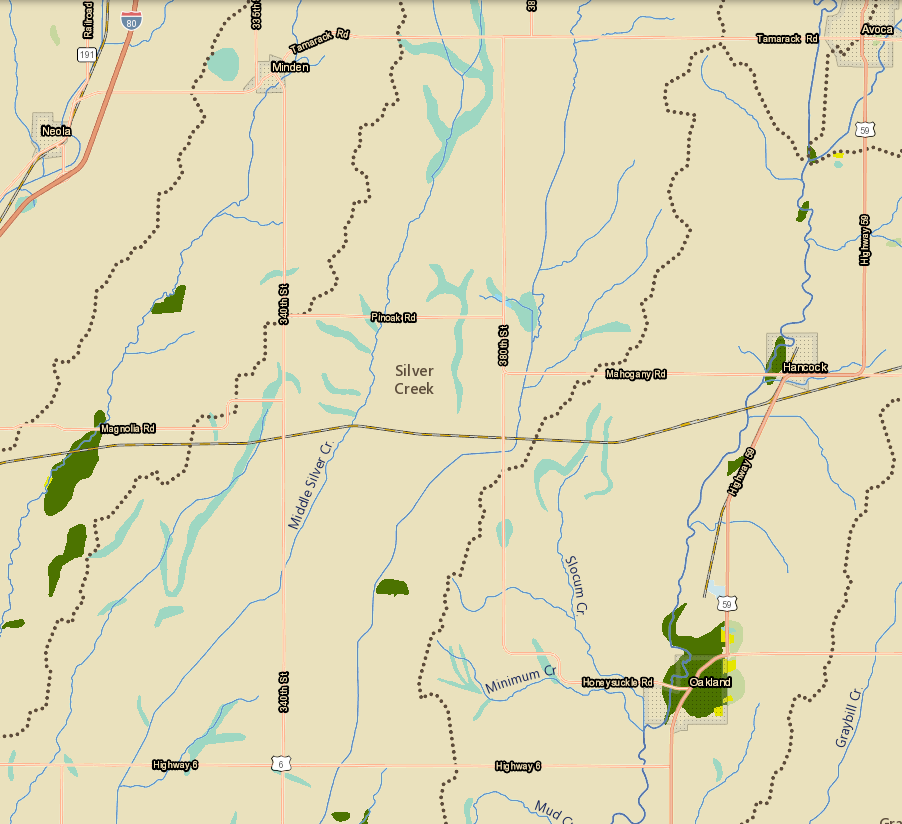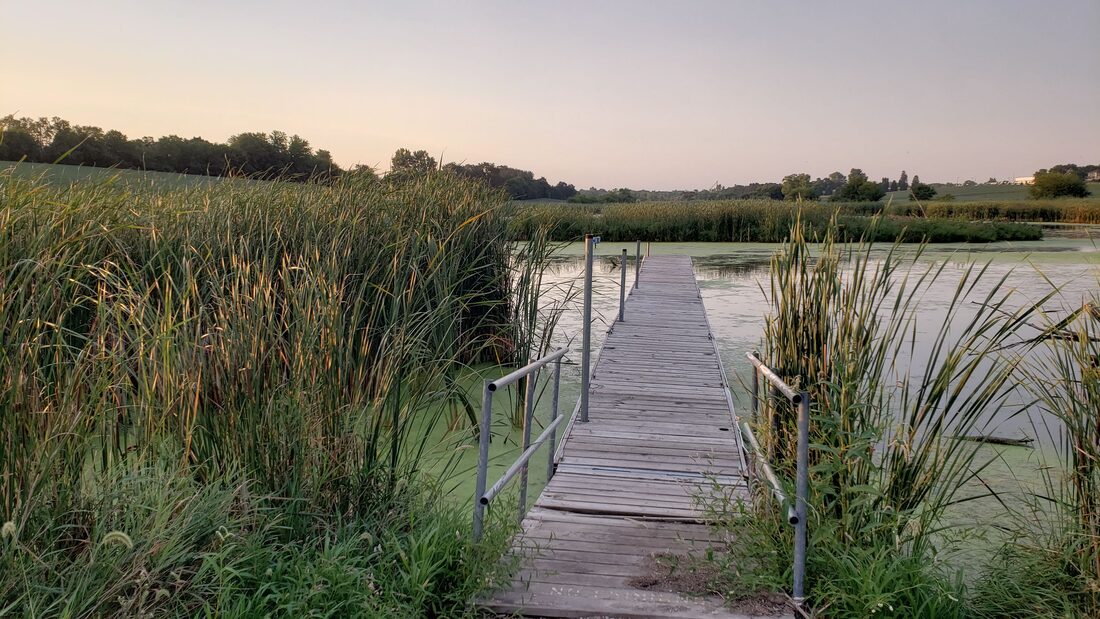|
Golden Hills is excited to welcome two new members to our Board of Directors. Kathy Fiscus of Council Bluffs and Seth Watkins of rural Clarinda were recently approved by the Board as West Pottawattamie and Page county representatives. They both bring a wealth of skills and knowledge to help guide our organization and fulfill our mission of collaboratively developing and leading community, conservation and cultural initiatives to improve our quality of life in rural western Iowa. Council Bluffs native Kathy Fiscus enjoyed a 40-year career in television broadcasting in Iowa, Wisconsin, and Nebraska. After retiring from TV, Fiscus spent 14 years at the Council Bluffs Convention and Visitors Bureau in various capacities. While at the CVB, Fiscus worked closely with Pottawattamie Conservation and became an avid enthusiast and promoter of outdoor conservation and activities. Now fully retired, Fiscus concentrates on several board positions, advisory committees, and being a full time artist. One extensive artistic passion is the Loess Hills National Scenic Byway (TM). Fiscus has a daughter and family living in Kansas City, Kansas, and a son living in Des Moines, Iowa. Seth Watkins is the fourth generation to care for his family’s heritage farm near Clarinda, where he raises beef cattle, corn, hay, oats, and various cover crops. Watkins is passionate about stewardship, especially water quality, the restoration of prairie, woodlands, & riparian areas. Watkins believes that when you have a healthy and diverse landscape combined with the values of inclusion, equality, & accessibility you can accomplish anything. Watkins serves on The Iowa Natural Heritage Foundation board of Directors and the Leadership Council for The Iowa Learning Farms. His wife Christy is an Early Childhood Specialist for Green Hills AEA. They have a son Spencer and a daughter Tatum.  Seth Watkins, Page County Seth Watkins, Page County Please join us in welcoming Kathy and Seth to the Golden Hills team!
Learn more about our B0ard of Directors here.
0 Comments
Although Iowa is not known as an extremely diverse place, the state has a long history of civil rights successes. Iowa desegregated schools, legalized interracial marriage, and allowed black men voting rights before most other states and the federal government. Iowa was always a "free" state, not allowing slavery. The first documented black person in what is now recognized as the State of Iowa was York with the Lewis and Clark Expedition. York was a slave owned by William Clark and passed through during the 1804-1806 trek (Source: Iowa PBS). He helped care for Sergeant Floyd, who fell ill while the crew passed near current-day Sergeant Bluff and was the expedition's only death (Source: National Park Service). While slavery was still legal, fugitive slaves found safe harbors in many Iowa communities along the Underground Railroad.  Map of Underground Railroad in Iowa. Source: Cedar Rapids Gazette. https://www.thegazette.com/subject/life/people-places/iowa-was-more-than-a-stopover-in-anti-slaverys-underground-railroad-20170226 Map of Underground Railroad in Iowa. Source: Cedar Rapids Gazette. https://www.thegazette.com/subject/life/people-places/iowa-was-more-than-a-stopover-in-anti-slaverys-underground-railroad-20170226 Among the most important Underground Railroad sites in southwest Iowa were the Todd House and Tabor Antislavery District. According to the National Park Service: "Townspeople met in the square to discuss and reinforce their controversial, yet strongly held beliefs in opposition to the “flagrant sin” of slavery. As a result, they developed strong networks of resistance to slavery and assistance to fugitive slaves. The square was also used for camping and drilling exercises executed by local militiamen and by abolitionist John Brown before his raid on Harper’s Ferry." The Reverend George B. Hitchcock House near Lewis, on the banks of the East Nishnabotna River in Cass County, was another important site. In the Loess Hills of Monona County, a little-known all-black cemetery hides on a rural gravel road. According to a 2004 Sioux City Journal article: "[T]he site is alternately called the Black Cemetery or the Negro Cemetery. Only nine headstones remain and the history of the people buried there can't be determined from the inscriptions. But the tale is that there once was a thriving African-American settlement in the Loess Hills of rural Moorhead..." (Source: Sioux City Journal). Preston Love, a jazz musician from Omaha, played his first professional show at the Aeroplane Inn, located in the Loess Hills in Honey Creek. The Love's Jazz & Art Center in Omaha honors his name and legacy. From their website: "His big break came when he joined the Count Basie Orchestra at the age of 22, and from there, he went on to play in the bands of renowned artists like Ray Charles and Aretha Franklin. Love traveled worldwide, headlining jazz festivals, touring with bands and fronting his own Preston Love Orchestra. With other local musicians like Buddy Miles, Anna Mae Winburn and Lomie Washburn, among others, Love helped make Omaha a destination for jazz from the 1920s to the early 1960s." (Source: LJAC.org)
Oscar Micheaux, a Black writer and filmmaker, lived in Sioux City in the early 20th Century. Micheaux focused on race relations in many of his works, and has influenced many well-known fillmmakers since then (Source: Sioux City History). According to Sioux City History, "The Sioux City Ghosts were an all-black fast-pitch softball team. They started in Sioux City and began touring the United States, Canada, and Mexico during the 1930s, and played until 1956. Because of their pranks on the softball field, they were often compared to the famous Harlem Globetrotters" (Source: Sioux City History). In Council Bluffs, the historic Cooper House "once belonged to a couple who helped found the Iowa-Nebraska chapter of the National Association for the Advancement of Colored People, better known as the NAACP." (source: Des Moines Register). Many black Iowans experienced discrimination through legal practices like redlining. While segregation was technically illegal in Iowa, many communities were still, in reality, segregated (Source: Iowa PBS). Sundown towns, where Black people could be arrested for being in a community after dark, were found throughout Iowa. New Market, in southwest Iowa's Taylor County, had a sundown law on the books until the 1980's (Source: Undesign DSM). Despite these challenges, Black people have continued to live and thrive across Iowa. Visit the national African American History Month website here. February 2 is World Wetlands Day, an annual event to "raise global awareness about the vital role of wetlands for people and our planet. This day also marks the date of the adoption of the Convention on Wetlands on 2 February 1971." The month of May has been designated as National Wetlands Month, "created in 1991 by EPA and its federal, state, tribal, local, non-profit, and private sector partners to celebrate the vital importance of wetlands to the nation's ecological, economic, and social health and to educate Americans about the value of wetlands as a natural resource." What is a wetland? According to U.S. Fish & Wildlife Service, "Wetlands are lands transitional between terrestrial and aquatic systems where the water table is usually at or near the surface or the land is covered by shallow water. For the purposes of this classification wetlands must have one or more of the following three attributes: (1) at least periodically, the land supports predominantly hydrophytes; (2) the substrate is predominantly undrained hydric soil; and (3) the substrate is nonsoil and is saturated with water or covered by shallow water at some time during the growing season of each year." (Source: USGS National Water on Wetland Water Resources). Why they matter: A few wetland facts from Iowa Association of Naturalists' Iowa's Biological Communities series on Iowa Wetlands:
Most of Iowa's wetlands were located in the Des Moines Lobe, known as the Prairie Pothole region due to the abundance of small lakes, ponds, and wetlands from the most recent glaciation. But even western Iowa had plenty of wetlands. The early General Land Office surveys from the mid-19th Century shows wet areas in the rolling hills of northern Shelby and Pottawattamie counties, for example. While these areas are generally well-drained, beaver dams on small streams likely helped create many of the wetlands. The Missouri Alluvian Plain and valleys of other large rivers also had wetlands, as they flooded regularly prior to channelization and damming. Wetlands offer many benefits to people, wildlife, land, and water. They are sometimes called "nature's kidneys" due to their ability to cleanse water before it enters streams and rivers. They absorb excess nutrients and chemicals from agriculture and industry, as well as trap sediment from soil erosion. They capture excess water and slowly soak it into the ground, which reduces flooding. Wetlands can also provide recreational opportunities like hunting, trapping, fishing, wildlife watching, birding, and paddling. Living or even spending time near biodiversity, greenery, and water have all been shown to improve well-being and happiness. Areas that are often too wet for farming can be problematic for farmers, but several funding programs are available to restore wetlands and make it profitable, including the Wetland Reserve Program, Conservation Reserve Program, Conservation Reserve Enhancement Program, and Farmable Wetlands Program (Source: NRCS Restoring Iowa Wetlands). Watch this Introduction to Iowa's Wetlands video from Iowa State University for some background: This video from Iowa Outdoors provides a great summary of wetland restoration in Iowa. And this video from The Nature Conservancy is an excellent primer on the benefits of Iowa's wetlands. Learn more about World Wetlands Day and how you can help protect and restore these fragile and endangered ecosystems at worldwetlandsday.org
More Links & Resources |
Archives
June 2024
Categories
All
|
Address712 South Highway Street
P.O. Box 189 Oakland, IA 51560 |
ContactPhone: 712-482-3029
General inquiries: [email protected] Visit our Staff Page for email addresses and office hours. |









 RSS Feed
RSS Feed